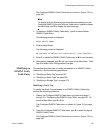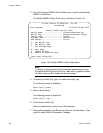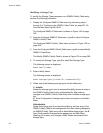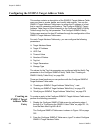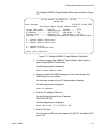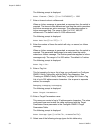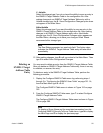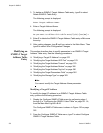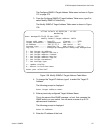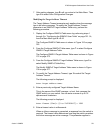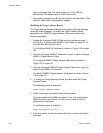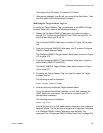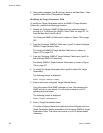
AT-S63 Management Software Menus User’s Guide
Section IV: SNMPv3 375
V - Volatile
Select this storage type if you do not want the ability to save an entry in
the SNMPv3 Target Address Table to the configuration file. After
making changes to an SNMPv3 Target Address Table entry with a
Volatile storage type, the S - Save Configuration Changes option does
not appear on the Main Menu.
N-NonVolatile
Select this storage type if you want the ability to save an entry in the
SNMPv3 Target Address Table to the configuration file. After making
changes to an SNMPv3 Target Address entry with a NonVolatile
storage type, the S - Save Configuration Changes option appears on
the Main Menu, allowing you to save your changes. Allied Telesis
recommends this storage type.
Note
The Row Status parameter is a read-only field. The Active value
indicates the SNMPv3 Target Address Table entry will take effect
immediately.
12. After making changes, type R until you return to the Main Menu. Then
type S to select Save Configuration Changes.
Deleting an
SNMPv3 Target
Address Table
Entry
You may want to delete an entry from the SNMPv3 Target Address Table.
After you delete an SNMPv3 Target Address Table entry, there is no way
to undelete, or recover, the entry.
To delete an entry in the SNMPv3 Target Address Table, perform the
following procedure:
1. Display the Configure SNMPv3 Table menu by performing steps 1
through 3 in “Configuring the SNMPv3 User Table” on page 321. Or,
from the Main Menu type 5->5->5.
The Configure SNMPv3 Table menu is shown in Figure 126 on page
322.
2. From the Configure SNMPv3 Table menu, type 7 to select Configure
SNMPv3 Target Address Table.
The Configure SNMPv3 Target Address Table menu is shown in Figure
139 on page 386.
Note
To display a Group Name and its associated parameters from the
Configure SNMPv3 SecurityToGroup Table menu, type N to display
the Next Page and P to display the previous page.



